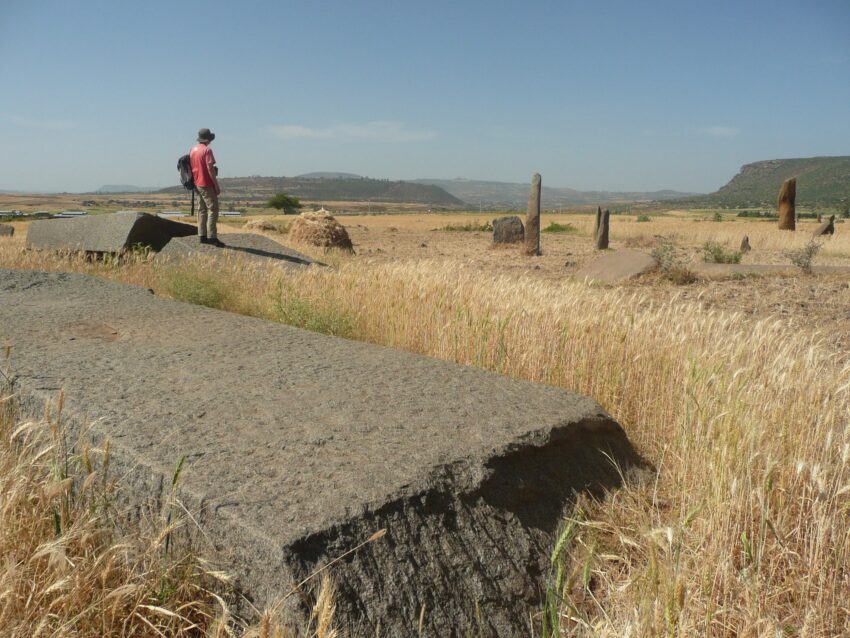Exploring the Gudit Stelae Field
The Gudit Stelae Field, located in Aksum, Ethiopia, stands as a remarkable testament to ancient Aksumite culture. These towering monoliths reflect the region’s rich history and its connection to broader megalithic traditions in the Near East and Africa.
Get your dose of History via Email
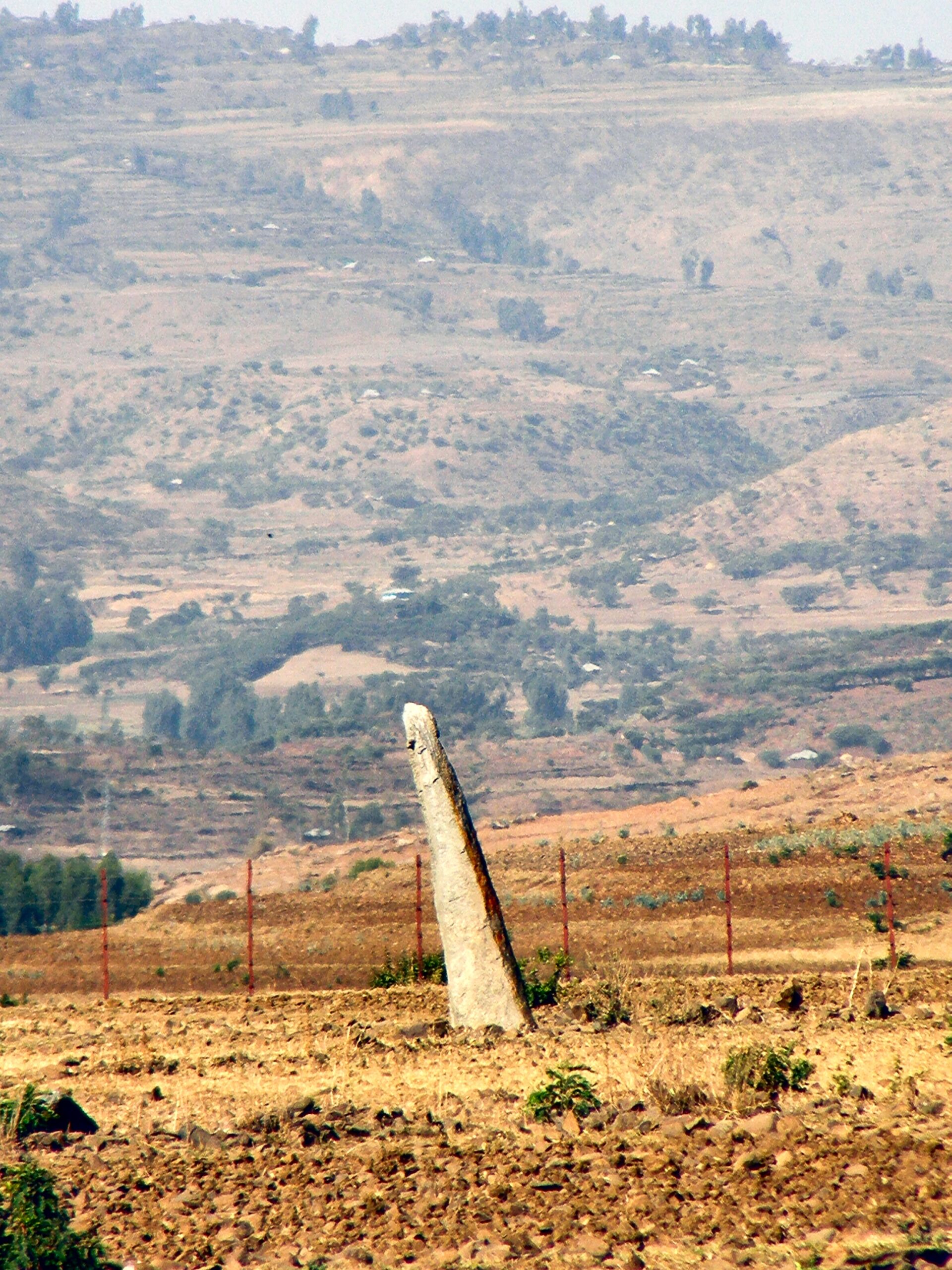
Types of Stelae
The Aksumite stelae come in four primary forms:
- Unhewn, elongated stones: These rough, pointed stones range from 3 to 5 meters high.
- Pointed stones with smooth sides: Featuring a square section, these stones vary from 1.6 to 9.5 meters in height.
- Hewn slabs: With smooth sides and a rectangular section, these slabs can reach up to 21 meters high.
- Storied stelae: Carved with symbolic representations of houses, these impressive structures stand 15 to 33 meters tall.
At the base of some hewn and storied stelae, offering tables adorned with small basins and vegetal ornaments were placed. The stelae were typically oriented southeast and quarried nearby, using wooden wedges soaked and driven into rectangular notches to cut the rock.
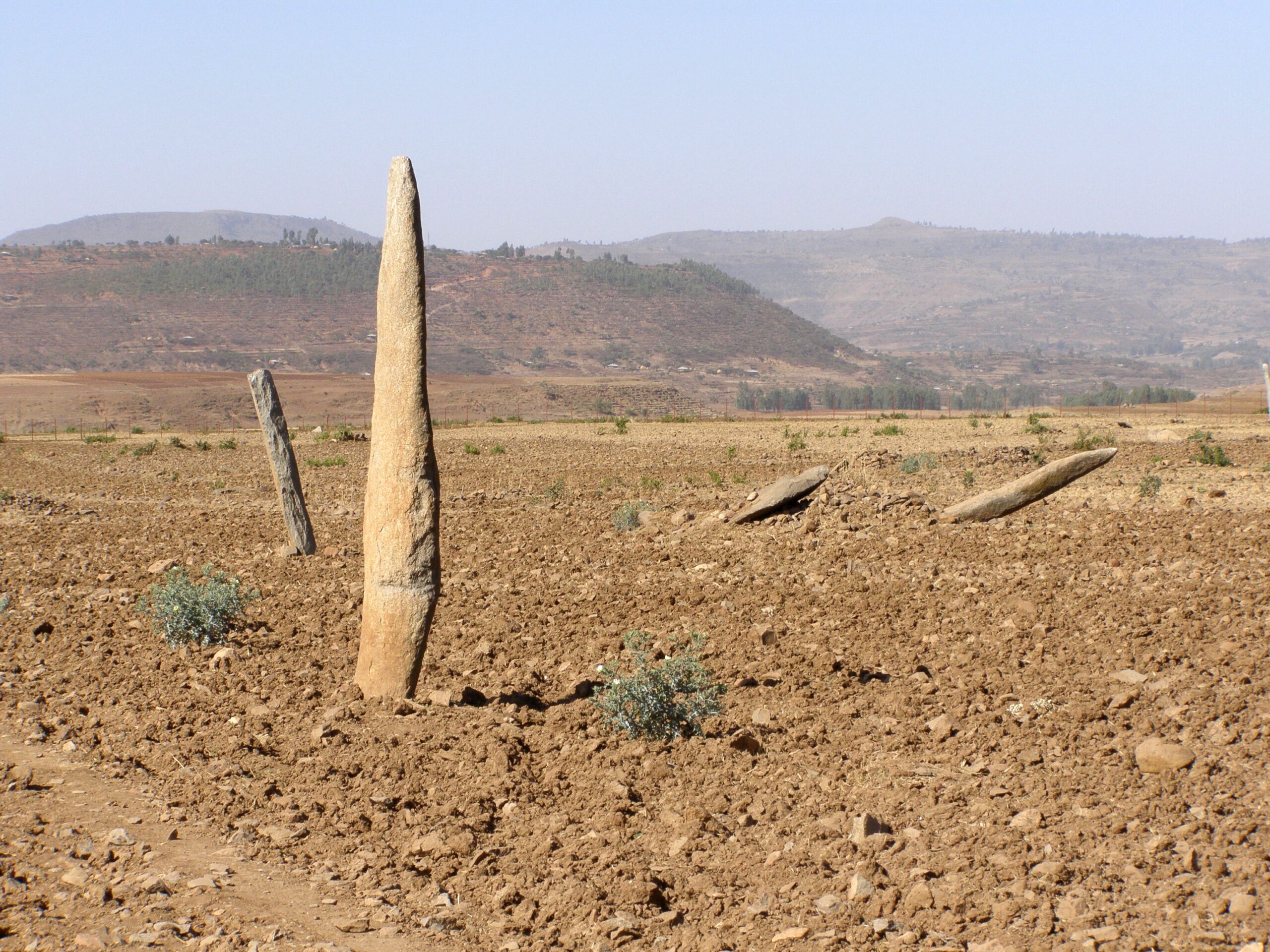
Geographic Distribution
These stelae are mainly found in the Tigrai region, with notable sites including Addi Dahno, Bieta Giyorgis, Aksum, Henzat, Hausien, and ‘Anza. In Aksum, they form four distinct fields: Gudit, Mai Hejja, Mai Malahsô, and Bazen. Stelae have also been recorded in Eritrea at sites like Matarà, Dera’a, Selhan Nahahà (Addi Caieh), and Rora Laba.
Historical Context
The Aksumite stelae date primarily to the Early Aksumite Period (AD 100/200–400). Some, like those at Matarà and ‘Anza, bear inscriptions in paleo-Ethiopian script, suggesting they predate the kingdom of Ezana. Glass vessels of Egyptian type found in a pit grave near the Gudit area date some stelae to the 3rd-4th centuries AD.
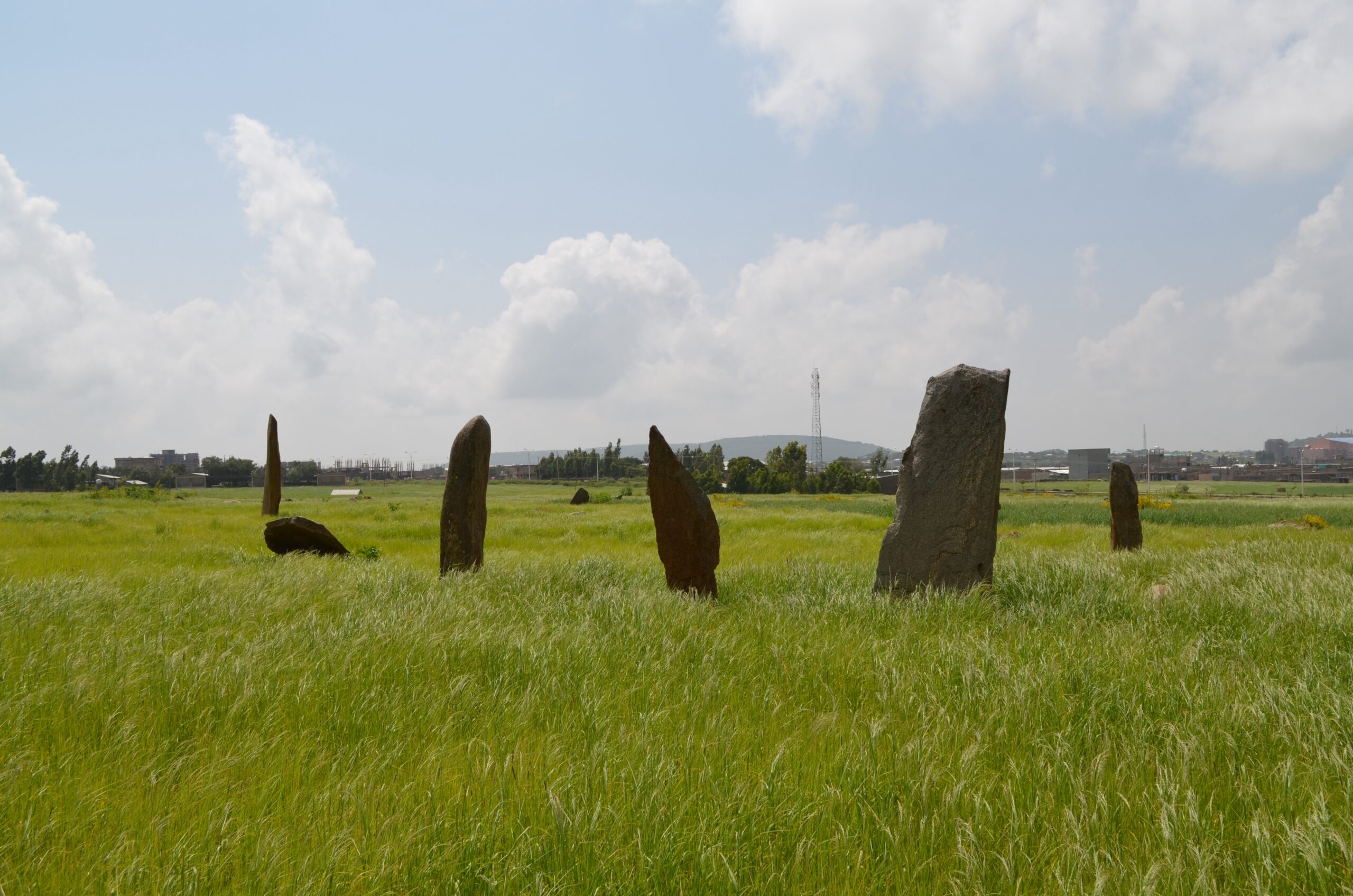
Cultural and Religious Significance
Initially regarded as religious monuments, the stelae were compared to Egyptian obelisks and Semitic bethyls. However, their funerary function was later confirmed through archaeological evidence. The stelae indicate general cemeterial areas rather than specific graves, with a connection to ancestor worship rather than individual memorials.
Megalithic Tradition and Influence
The Aksumite stelae reflect a broader megalithic tradition in the region, with potential influences from Egyptian and South Arabian cultures. The use of stelae for religious and funerary purposes spans the Near East and Northern Africa, from the Nile Valley to Central and West Africa.
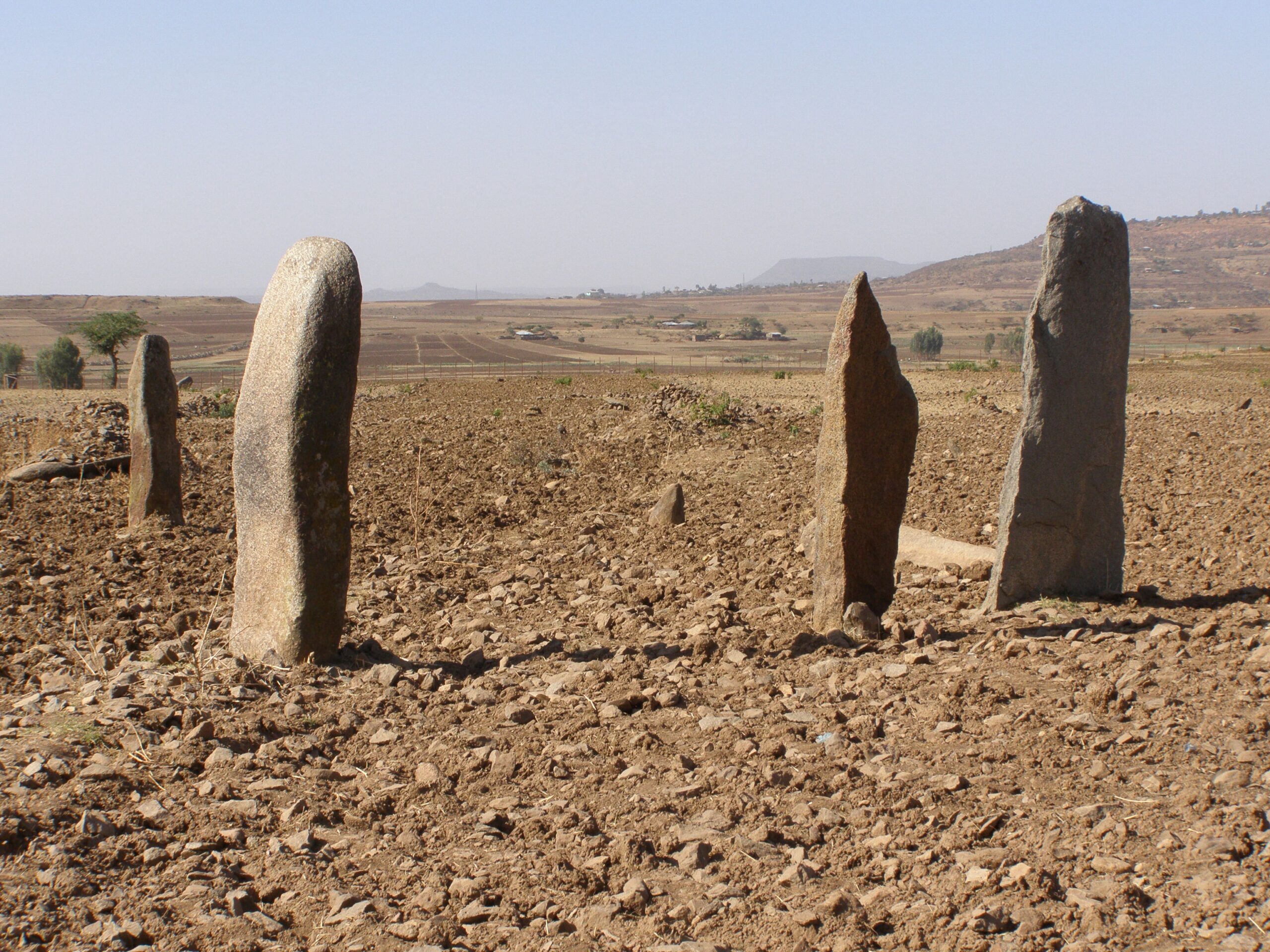
Distinctive Features and Comparisons
Aksumite stelae differ from the Semitic nephesh, which represented the deceased’s personality and marked single burials. Instead, Aksumite stelae indicated cemetery areas and were involved in offering rituals. They cannot be directly compared to the figurative or symbolically decorated stelae of Syria, Phoenicia, and South Arabia.
Broader Megalithic Context
Megalithic stelae have been discovered in various African regions, including:
- Nubia: Funerary monoliths and grave stones.
- Ethiopian-Sudanese borderland: Cemeterial stelae at Kassala.
- Sahara: Stelae associated with tombs and ceremonial structures.
- Maghreb: Stelae and tumuli in Algeria and Morocco.
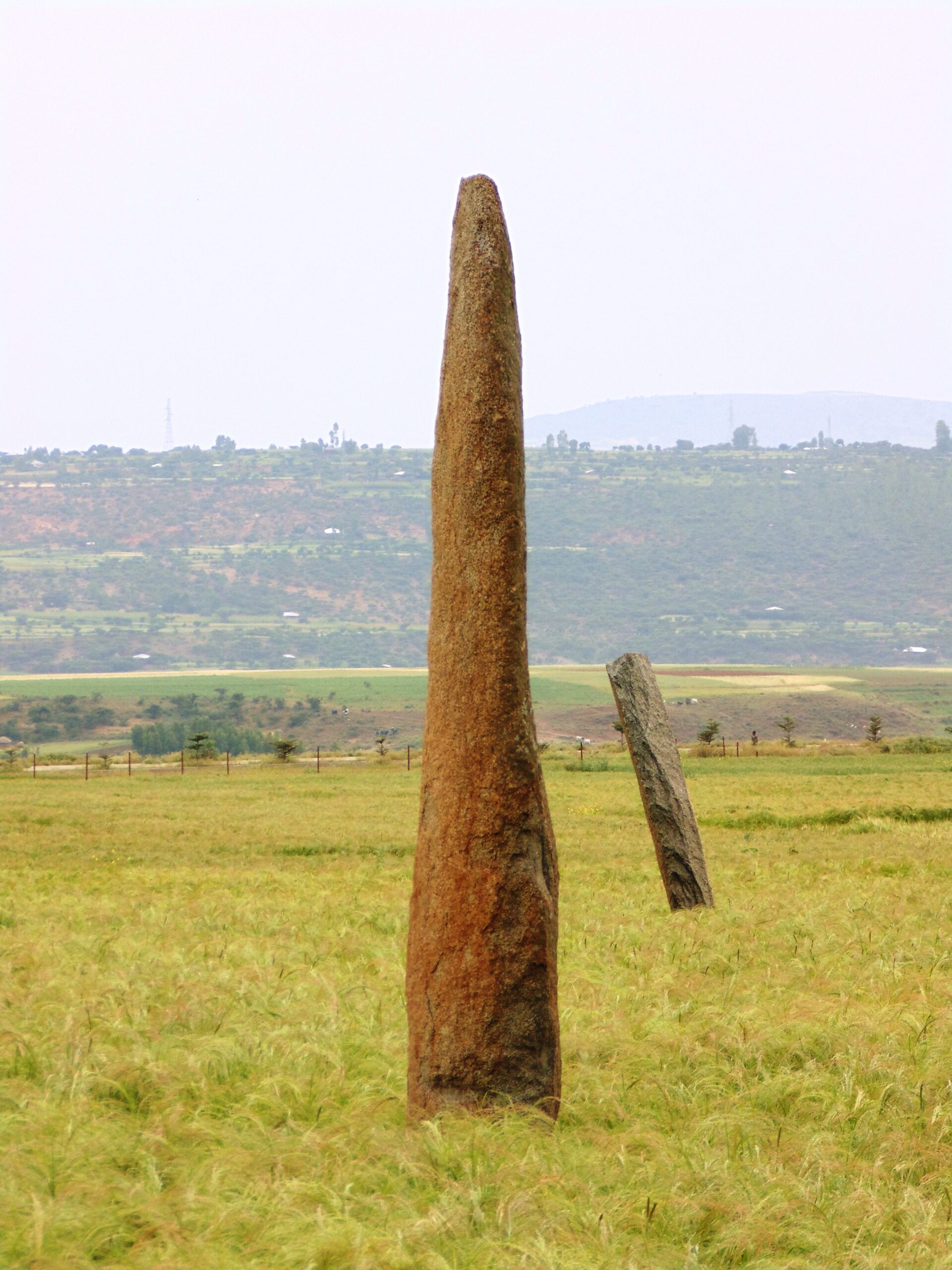
Conclusions
The Aksumite stelae belong to an ancient African tradition of using monoliths to mark cemeterial areas. This tradition likely originated in the late 3rd millennium BC in Eastern Sudan and Northern Ethiopia. Ongoing archaeological research continues to shed light on the African roots of Aksumite civilization, highlighting its unique and complex cultural heritage.
Sources:
Fattovich Rodolfo. Some remarks on the origins of the Aksumite Stelae. In: Annales d’Ethiopie. Volume 14, année 1987. pp. 43-69.

